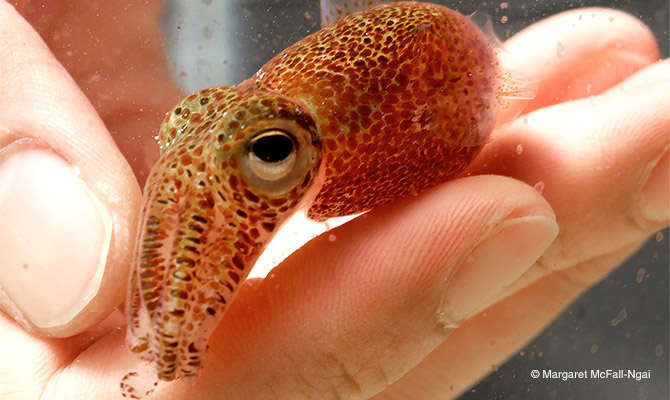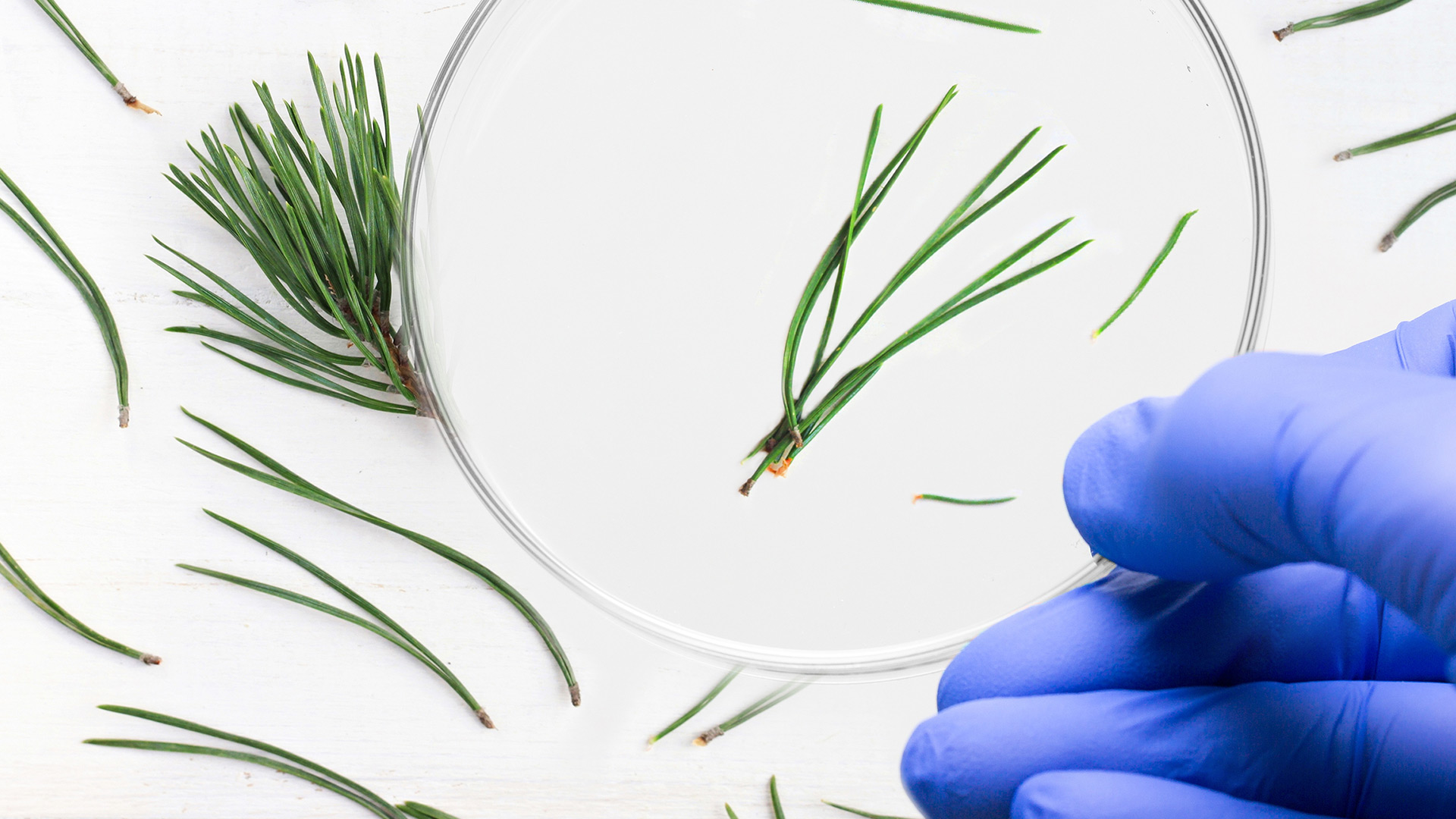
A Squid with a Torch
Nowadays it is common knowledge that animals and plants form communities with bacteria, archaea and eukaryotic microorganisms. ‘Biofilm’, ‘nodule bacteria’, ‘microbiome’ … these are now all familiar terms to us.
What is less well known, however, is that such ecological interactions in the history of the earth were essential for the development of life as we know it. This is because eukaryotic cells with mitochondria and photosynthetic plants with plastids only emerged around one to two billion years ago through the uptake of single-celled organisms.
Today, symbioses between higher organisms and microorganisms are ubiquitous. The list of symbioses described is almost endless – and is constantly growing. “These are early days and we have barely scratched the surface of the vast diversity of symbiotic systems that drive the biosphere,” writes Margaret McFall-Ngai from the CalTech Institute in California [1]. The researcher is known for her studies on the symbiotic community of the Hawaiian bobtail squid Euprymna scolopes and the marine bacteria Vibrio fischeri [2]. This community, which can also be established in the laboratory, can be used to investigate how an environmental bacterium establishes a mutually beneficial extracellular colonisation of an animal host and how the host deals with it.

How E. scolopes makes its symbionts glow in the dark
The small nocturnal squid lives in the shallow waters of the Pacific Ocean near seagrass beds. It houses symbionts in a special light organ. The bobtail squid chooses its microbial partners very specifically. It does not accept any bacteria other than V. fischeri, which is capable of bioluminescence.
To stimulate the bacteria to glow, the host synthesises chitin in the light organ at dusk. This causes acidification of the tissue, which increases the oxygen content and thus favours the development of bioluminescence [3]. Due to the special anatomy of the light organ, the bacteria shine downwards towards the seabed like a torch and prevent the squid from casting a telltale shadow in the bright light of the moon or stars. This camouflage protects the creature from becoming a victim of predators on its nocturnal forays into the shallow waters. On darker nights, when the cone of light would give the squid away rather than protect it, it can close its light organ and thus ‘switch off the light’.
The bacteria, in turn, benefit from this symbiotic relationship as the squid’s pouch provides protection and nutrition. This is an example of a wonderfully reciprocal symbiosis which brings mutual benefit to these two very unequal partners.
Daily Housework
During the day, the cephalopod hides in the sand. Having no need of its symbionts in the daytime, the squid expels up to 95% of the microbes from its light organ towards the end of the night. Perhaps they disturb it, have a harmful long-term effect or are exhausted after work … researchers do not yet know the exact reasons for this daily clear out. The few remaining bacteria multiply during the course of the day so that they can glow again the next evening. This oscillating day and night rhythm is also reflected in the expression of various genes in both partners.
A very selective little squid …
Unlike aphids, for example, the bobtail squid E. scolopes do not pass on their symbionts to their offspring. Each new generation has to find the right bacteria for itself. However, this is a quick process as, within a few hours of hatching, the juveniles collect their bacterial symbionts from the seawater.
The mechanisms of this process must be highly selective, as the proportion of V. fischeri in the total bacterial phytoplankton is only 0.1%. So far, we know that the communication between the host and symbionts is two-fold: there is an interaction of surface of V. fischeri with cells of the squid, as well as the uptake of bacterial molecules into the host cells. Cilia and a special mucus on the epithelium at the entrance to the light organs are also necessary for selection.
Chemotactically guided, the ‘right’ bacteria then reach deeper into the light organ. However, researchers have yet to shed light on the details of the selection process. “We know that the innate immune system [of E. scolopes] controls part of the process. How much of it is controlled by other, unknown activities that involve a kind of recognition memory remains to be determined. However, the processes that control the establishment and persistence of this association cannot possibly be considered non-specific,” McFall-Ngai asserts [1].
The whole story about E. scolopes and V. fischeri, told by Margaret McFall-Ngai:

You can find more exciting stories and facts from research into symbioses in our magazine carl 03
Sources:
[1] M. McFall-Ngai 2024, PLoS Biology, doi 10.1371/journal.pbio.3002571
[2] M. McFall-Ngai 2014, PLoS Biology, doi 10.1371/journal-pbio.1001783
[3] J. Schwartzman et al. 2014, PNAS doi 10.1073/pnas.1418580112
Recommended review articles:
S. Nyholm and M. McFall-Ngai 2021, Nat Rev Microbiol. doi 10.1038/s41579-021-00567-y
K. Visick, E. Stabb and E. Ruby 2021, Nat Rev Microbiol. doi 10.1038/s41579-021-00557-0





